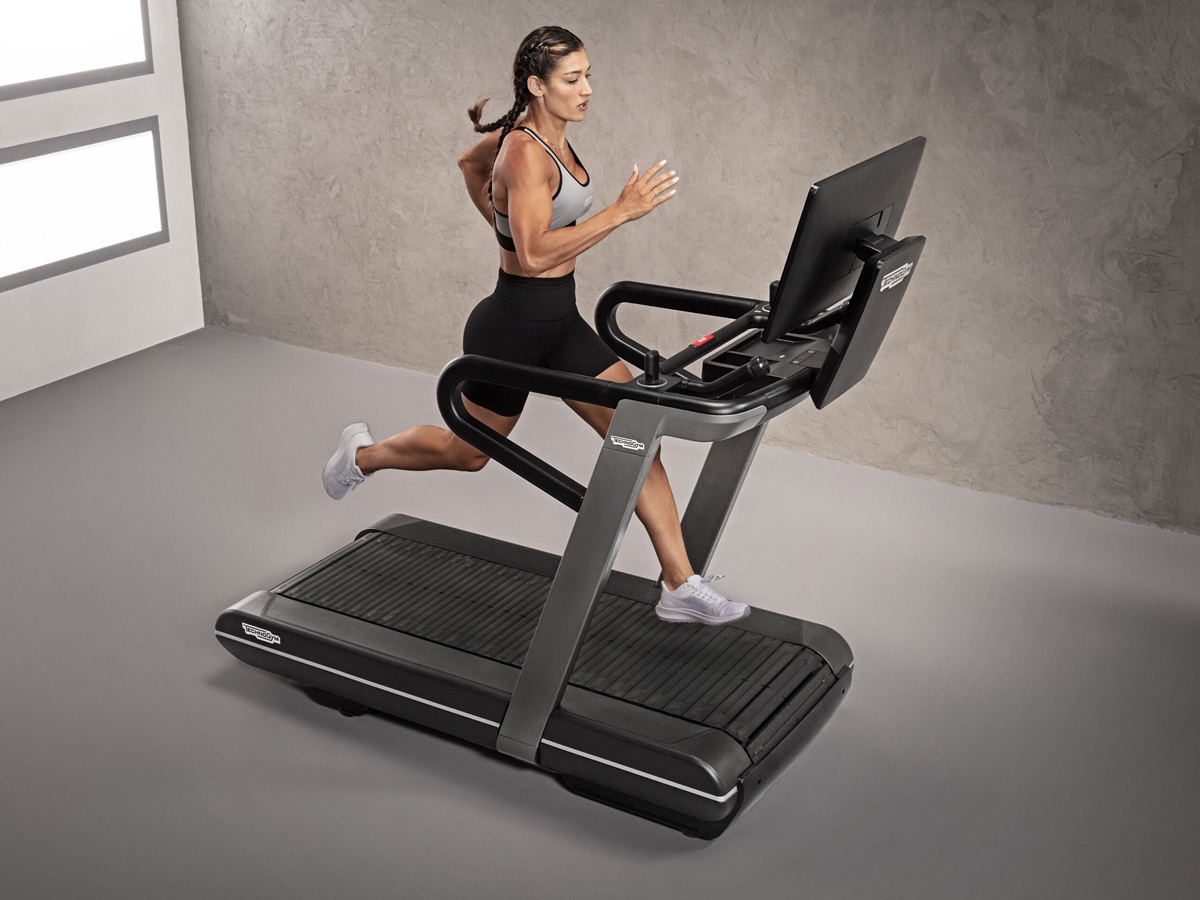

Featured
What Should My Running Pace Be
Modified: January 2, 2024
Find out what your running pace should be with our featured article. Discover the optimal speed to achieve your fitness goals and improve your performance.
Introduction
When it comes to running, one of the key factors to consider is your pace. Your running pace is the rate at which you move per unit of time, typically measured in minutes per mile or kilometers. Determining the right pace for you is crucial to optimize your performance, prevent injuries, and reach your running goals.
Your running pace is unique to you and can vary based on various factors such as age, fitness level, goals, and terrain. Some runners prefer a faster pace for shorter distances, while others opt for a slower, steady pace for longer distances. Finding the sweet spot for your running pace can significantly impact your overall running experience.
In this article, we will delve into the factors that affect your running pace and how to calculate the ideal pace for your training sessions. Whether you are a beginner or an experienced runner, understanding the concept of running pace can help you improve your performance and make your runs more enjoyable.
Before diving into the specifics of determining your running pace, it’s essential to note that there is no one-size-fits-all approach. Every runner is unique, and what works for one person may not work for another. It’s vital to listen to your body, be patient with your progress, and make gradual adjustments to your pace as needed.
So, let’s lace up our running shoes and embark on a journey to discover the secrets of finding your running pace.
Determining Your Running Pace
Before you can determine your running pace, it’s crucial to establish your current fitness level. If you’re a beginner, you may want to start with a gentle jog or a brisk walk to build up your endurance gradually. For more experienced runners, an assessment of your recent race times or previous training runs can provide valuable insights into your current pace.
Additionally, it’s important to establish your running goals. Are you aiming for a faster speed, longer distances, or simply looking to maintain a steady pace? Understanding your objectives will help you set a realistic and attainable running pace.
Once you have a baseline for your fitness level and goals, there are several methods you can use to determine your running pace:
- Time Trial: Find a flat or gently sloping course and run at a comfortably hard effort for a specific distance, such as a mile or kilometer. Note the time it takes to complete the distance and calculate your pace.
- V02 Max Test: This is a more advanced method that involves running at maximum effort for 8-12 minutes to estimate your maximal oxygen uptake. A running coach or fitness professional can guide you through this assessment.
- Heart Rate Monitor: Use a heart rate monitor to track your heart rate during a run. This can give you insights into your effort level and help you determine if you’re maintaining an appropriate pace.
It’s important to remember that these methods provide estimates, and they may not be completely accurate for everyone. Running pace can fluctuate due to various factors, such as fatigue, weather conditions, and terrain. Therefore, it’s essential to regularly reassess your pace and make adjustments as needed.
Understanding your current fitness level, setting realistic goals, and utilizing different methods to determine your running pace will lay the foundation for optimizing your training and reaching your full potential as a runner.
Factors Affecting Running Pace
Running pace is influenced by a variety of factors that can impact your performance. It’s important to consider these factors when determining and adjusting your running pace:
- Fitness Level: Your overall fitness level plays a significant role in your running pace. As you become fitter, your body becomes more efficient at utilizing oxygen, which can lead to increased speed and endurance.
- Age: Age can affect running pace due to factors such as changes in muscle mass, flexibility, and cardiovascular capacity. It’s important to be mindful of age-related changes and adjust your expectations accordingly.
- Terrain: The terrain you’re running on, such as flat roads, hilly trails, or uneven surfaces, can impact your pace. Running on hills or challenging terrains may slow you down compared to running on flat surfaces.
- Weather Conditions: Weather conditions, such as heat, humidity, wind, and even altitude, can significantly affect your running pace. Running in extreme heat or high altitude may require a slower pace to avoid overheating or altitude sickness.
- Mental State: Your mental state and mindset can influence your running pace. Positive thoughts and a focused mindset can help you maintain a steady pace, while negative thoughts or distractions may affect your performance.
- Running Form: Your running form and technique can impact your efficiency and speed. Proper posture, foot strike, and arm movement can contribute to a more efficient running stride, which can ultimately improve your pace.
- Rest and Recovery: Sufficient rest and recovery are essential for optimizing your running pace. Overtraining or pushing yourself too hard without proper rest can lead to fatigue, slower pace, and increased risk of injuries.
Remember that these factors can interact with each other and may affect your running pace differently. It’s important to listen to your body, adapt to different conditions, and make necessary adjustments to your running pace accordingly.
Training Zones and Heart Rate
Understanding your training zones and monitoring your heart rate can be valuable tools in determining and optimizing your running pace. Training zones are specific heart rate ranges that correspond to different levels of intensity during your workouts.
There are generally five training zones:
- Zone 1 – Recovery: This zone is characterized by very light intensity, allowing your body to recover between harder workouts.
- Zone 2 – Easy: The easy zone is a comfortable pace that you can sustain for an extended period without feeling too fatigued.
- Zone 3 – Moderate: This zone is a moderate pace where you start to feel slightly challenging, but still sustainable for long distances.
- Zone 4 – Threshold: The threshold zone is a quicker pace that pushes you out of your comfort zone, replicating the effort level you can sustain for about an hour.
- Zone 5 – Maximum: This zone is an all-out effort where you can only sustain the pace for a short period, typically a sprint or maximum exertion.
To determine your training zones based on heart rate, you can use the maximum heart rate (MHR) formula: 220 minus your age. This formula provides a rough estimate, but individual variations can exist.
Monitoring your heart rate during runs can help you ensure that you’re training at the appropriate intensity for your goals. It can also help you identify when you’re pushing too hard or not pushing enough.
By training in different heart rate zones, you can build endurance, improve speed, and prevent overtraining. Adjusting your running pace based on your heart rate allows for more precise training and helps avoid burnout or injury.
Keep in mind that heart rate can be influenced by various factors, such as stress, fatigue, hydration, and heat. It’s essential to consider these factors when interpreting your heart rate data. Also, remember that heart rate can have some limitations, so it’s important to combine heart rate monitoring with other indicators, such as perceived exertion and pace.
Understanding your training zones and monitoring your heart rate can guide you in determining the appropriate running pace for different types of workouts and achieve optimal results in your training efforts.
Calculating Your Ideal Running Pace
Calculating your ideal running pace involves taking into account your goals, training zones, and personal preferences. While there are various methods to calculate pace, here are a few commonly used approaches:
- Perceived Exertion: Perceived exertion is a subjective assessment of how hard you feel you’re working during a run. It can be measured using a scale from 1 to 10, with 1 being very easy and 10 being maximum effort. Adjusting your pace based on how you feel can be an effective way to find your ideal running pace.
- Time Trials: Time trials involve running a specific distance at a desired effort level. By measuring your time and distance, you can calculate your pace per mile or kilometer. Regular time trials can help you track your progress and determine your ideal running pace.
- Training Plans: Many training plans, whether for beginners or experienced runners, provide recommended paces for different types of workouts. These plans are often designed by experienced coaches and can be a helpful guideline for finding your ideal running pace.
Another approach to determining your ideal running pace is through the use of pace calculators. These calculators take into account your recent race times or a recent time trial, and they can provide you with estimated paces for various distances. These calculators can be found online or through running apps.
Keep in mind that your ideal running pace may vary depending on the type of workout you’re doing. For example, your long run pace may be slower than your tempo run or interval pace. Adjusting your pace based on the intended purpose of the workout will help you get the most out of your training sessions.
Lastly, it’s important to be flexible and listen to your body. Your ideal running pace may change over time as you become fitter or as you adjust your goals. Pay attention to how your body feels during runs, and make adjustments to your pace if necessary.
Ultimately, calculating your ideal running pace is a combination of objective measurements, such as time and distance, as well as subjective factors, such as perceived effort and personal preference. Experiment with different methods and trust your instincts to find the running pace that works best for you.
Listening to Your Body
While calculations and guidelines can be helpful in determining your running pace, it’s equally important to listen to your body. Your body has a way of communicating its needs and limits, and paying attention to these cues can help you find the right pace for your workouts.
Here are a few ways to listen to your body when it comes to your running pace:
- Pay Attention to Breathing: Your breathing can offer valuable insights into your effort level. If you’re gasping for breath and struggling to maintain a conversation, you may be pushing too hard. On the other hand, if you can easily chat while running, you might need to pick up the pace.
- Monitor Energy Levels: Feeling excessively fatigued or lacking energy during runs may be a sign that you’re pushing yourself too hard. Adjusting your pace to maintain a steady energy level can help prevent burnout or overtraining.
- Watch for Pain and Discomfort: Pain or discomfort during a run can indicate that you’re pushing too hard or that something is off. Ignoring these signals can lead to injury. If you experience pain, it’s essential to slow down or take a break to avoid exacerbating the issue.
- Be Mindful of Recovery: Your body needs time to recover after intense workouts. If you find that you’re consistently fatigued or experiencing prolonged soreness, it may be a sign that you need to adjust your pace to allow for proper recovery.
- Consider External Factors: External factors such as stress, lack of sleep, or illness can impact your running performance. It’s important to be aware of these factors and make adjustments to your pace when necessary.
By listening to your body and understanding its signals, you can make informed decisions about your running pace. It’s important to find a balance between challenging yourself and respecting your body’s limitations.
Remember, running should be enjoyable and sustainable. By paying attention to your body’s feedback, you can find a pace that allows you to perform at your best while minimizing the risk of injury or burnout.
Adjusting Your Running Pace
Adjusting your running pace is a natural part of your running journey. As you progress and adapt to different conditions, it’s important to make necessary adjustments to optimize your performance and prevent plateauing or overexertion.
Here are some factors to consider when adjusting your running pace:
- Incremental Increases: When aiming to increase your running pace, it’s best to do so gradually. Making small, incremental increases in your pace allows your body to adapt and reduces the risk of injury or burnout. Aim for small improvements over time rather than trying to make drastic changes all at once.
- Periodization: Periodization involves dividing your training into cycles or phases, each with a specific focus. During certain phases, you may prioritize speed or strength, which will influence your running pace. Adjusting your pace based on the phase of training can help you maximize performance and progress in a structured manner.
- Training Intensity: Varying the intensity of your workouts is essential for improving your running pace. Tempo runs, interval training, and threshold sessions are all effective ways to increase your speed. Incorporating these workouts into your training plan can help you adjust your running pace accordingly.
- Environmental Factors: Environmental conditions, such as heat, humidity, or altitude, can impact your running pace. When facing challenging weather or terrain, it may be necessary to adjust your pace to maintain a consistent effort level. Be mindful of these factors and make appropriate adjustments to prevent overexertion.
- Race Day Strategies: On race day, it’s essential to have a pacing strategy. Starting too fast can lead to burnout, while starting too slow may hinder your ability to achieve your best time. Preparing and practicing race-specific pace strategies during your training can help you perform at your peak on race day.
- Regular Evaluation: Regularly evaluate your progress and performance to determine if adjustments to your running pace are needed. Keep track of your training data, including times, distances, and effort levels. This feedback can help you identify areas that require improvement and guide you in adjusting your pace accordingly.
Remember, adjusting your running pace is a dynamic process. It’s important to be patient with yourself and be willing to make changes as needed. Trust your instincts, seek guidance from experienced runners or coaches, and find a pace that challenges you while still allowing you to enjoy the sport.
By making thoughtful adjustments to your running pace, you can continue to progress and achieve your running goals while staying injury-free and maintaining a sustainable running practice.
Conclusion
Finding your optimal running pace is not a one-size-fits-all formula but rather a personalized journey that requires understanding your body, goals, and training methods. By considering factors such as fitness level, age, terrain, and weather conditions, you can determine the running pace that suits you best.
Listening to your body and paying attention to cues such as breathing, energy levels, and pain can guide you in adjusting your running pace. Incorporating heart rate monitoring and training zones can further enhance your training and help you achieve your running goals.
Remember, your running pace is not set in stone but may require adjustments over time. Gradual increases and periodization ensure a sustainable approach to improving your pace, while considering environmental factors and employing race day strategies can optimize your performance on the big day.
Regular evaluation and seeking guidance from experienced runners or coaches will help you refine your running pace and tailor it to your individual needs. Embrace the process, enjoy the journey, and trust your body’s ability to adapt and improve.
So, lace up your shoes, hit the road, and explore the vast possibilities of your running pace. With determination, patience, and a listening ear, you can discover the pace that propels you towards your running goals while keeping the joy of running alive.








